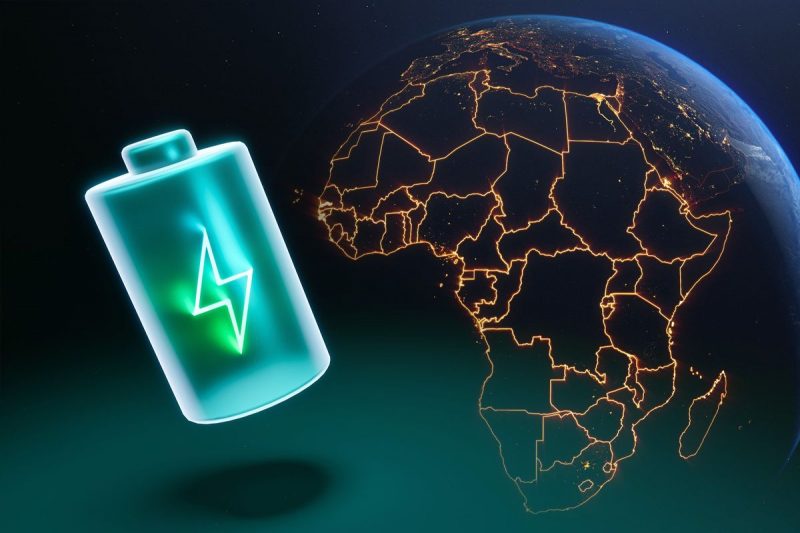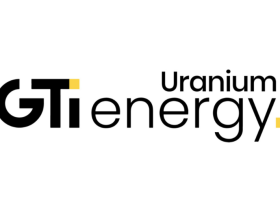Moving to greener sources of energy and reaching the net-zero goals set by governments around the world means more demand for key battery metals such as lithium.
In the past few years, the race to secure a steady and quality supply of lithium has heated up. The COVID-19 pandemic, paired with other factors such as the Russia-Ukraine war, revealed the vulnerabilities of the lithium supply chain and woke the western world up to its dependence on China.
Legislation such as the US Inflation Reduction Act and the EU’s Critical Raw Materials Act are just some examples of how governments are looking to strengthen their positions in the critical minerals sector.
When it comes to lithium, developing new sources of supply is essential if the energy transition is to take place — this is why Africa presents a unique opportunity.
Does Africa produce lithium?
Zimbabwe is the only African country that is a top 10 producer of lithium, and it accounted for about 800 metric tons (MT) of lithium supply in 2022. Total reserves in Zimbabwe stand at 220,000 MT, as per the US Geological Survey.
That said, there are a number of other African countries that have lithium resources, including Namibia, Mali, the Democratic Republic of Congo (DRC) and Ghana. All in all, Africa accounts for about 5 percent of global lithium resources.
Where is lithium found in Africa?
Many countries in Africa are looking to develop lithium resources as the race to secure stable supply of the battery metal continues to gather pace.
Zimbabwe
Arcadia
The Arcadia lithium project is Zhejiang Huayou Cobalt’s (SHA:603799) largest single investment in Africa to date. The Chinese company bought the asset from Prospect Resources (ASX:PSC,OTC Pink:PRSTF) and its partners in 2022. Hoping to produce 50,000 MT of lithium carbonate per year, Zhejiang Huyou Cobalt said the mine began trial production in March of this year.
Bikita
Bikita is already in production and has estimated ore reserves of 29.41 million MT. In 2022, China’s Sinomine Resource (SZSE:002738) bought the mine in a US$180 million deal. It has also spent another US$200 million to construct two lithium processing plants to produce 250,000 MT of spodumene concentrate and 480,000 MT of petalite per year.
In March, the Zimbabwe government put the mine on hold due to administrative concerns, but the operation is now back up and running.
Sabi Star
The Sabi Star lithium-tantalum project is located in the east of Zimbabwe’s Mashonaland province. The project is designed to produce 900,000 MT of raw ore per year, equivalent to about 200,000 MT of lithium concentrate. Last year, China’s Chengxin Lithium (SZSE:002240) invested US$76.5 million for a majority stake in the asset.
Zulu
The Zulu lithium-tantalum project is operated by Premier African Minerals (LSE:PREM). Chinese company Canmax Technologies (SZSE:300390), formerly Suzhou TA&A Ultra Clean Technology, is a major investor in Premier African Minerals. Canmax, together with CATL (SZSE:300750), the world’s top battery maker, owns Yibin Tianyi — a major Chinese lithium hydroxide producer.
In 2022, Canmax invested US$35 million to help with the construction of Zulu’s processing plant, which is expected to have an annual output of nearly 50,000 MT of spodumene concentrate. Despite delays, Zulu’s processing plant is now fully commissioned and capable of producing concentrate, with first spodumene shipments now scheduled for June.
Premier African Minerals also holds a 50 percent interest in another lithium project in Zimbabwe, Mutare. The remaining interest in the asset is owned by Li3 Lithium (TSXV:LILI).
Namibia
Karibib
Lepidico (ASX:LPD,OTC Pink:LPDNF) is developing the Karibib asset in Namibia, a project that has an expected mine life of 14 years. An updated ore reserve estimate from December 2022 shows the asset has 2.29 million MT in proved reserves and 5.98 million MT in probable reserves.
Uis
Andrada Mining (LSE:ATM), formerly Afritin Mining, is the operator of the Uis mine in Namibia, which was once the world’s largest hard-rock, open-cast tin mine. The asset produced its first lithium concentrate in the form of a high-purity petalite concentrate in May.
DRC
Manono
AVZ Minerals (ASX:AVZ) has a 75 percent interest in the Manono project, located in Southern DRC. The remaining interest is owned by state-owned company Cominiere. A definitive feasibility studypublished in 2020 shows a mine with a life of 20 years and the ability to produce 700,000 MT of high-grade SC6 lithium and 45,375 MT of primary lithium sulfate per year.
There is currently a dispute around the ownership of Manono, which has resulted in AVZ Minerals suspending trading on the ASX pending a resolution that will allow it to move forward with the project.
Mali
Goulamina
Located in Southern Mali, the Goulamina project has a mine life of 21 years, according to a definitive feasibility study from December 2021. Average annual spodumene concentrate production is expected to be 506,000 MT in Stage 1, rising to 831,000 MT in Stage 2.
Leo Lithium (ASX:LLL,OTC Pink:LLLAF), which is developing Goulamina together with Chinese top lithium producer Ganfeng Lithium (OTC Pink:GNENF,SZSE:002460,HKEX:1772), forecasts first spodumene concentrate production by mid-2024.
Bougouni
Kodal Minerals (LSE:KOD) is developing the Bougouni project in Southern Mali. The company has already received a mining license and is planning the construction phase of the project. According to a definitive feasibility report from 2020, Bougouni has a mine life of 8.5 years and will produce an average of 220,000 MT of 6 percent spodumene concentrate per year.
London-listed Kodal Minerals is currently in the process of meeting the conditions for a US$117.75 million funding package from its Chinese partners Hainan Mining (SHA:601969) and Xinmao Investment.
Ghana
Ewoyaa
Expected to be Ghana’s first lithium-producing mine, Ewoyaa is Atlantic Lithium’s (LSE:ALL,OTCQX:ALLIF) flagship project. The company, which has secured funding through an agreement with Piedmont Lithium (ASX:PLL,NASDAQ:PLL), has submitted an application for a mining license and is working to complete a definitive feasibility study later this year.
A recent update to Ewoyaa’s mineral resource estimate shows an increase to 35.3 million MT at 1.25 percent lithium oxide, including 28 million MT in the measured and indicated categories.
Does China own lithium mines in Africa?
China plays a key role in the lithium-ion battery supply chain, dominating the midstream when it comes to lithium. Despite being the third largest producer of lithium, China is behind Australia, known for its hard-rock assets, and Chile, known for its brines. This is why Chinese companies have invested heavily in lithium sources in other regions, including South America and, of course, Africa.
In Zimbabwe, Chinese companies have reportedly invested over US$1.4 billion in lithium assets. Furthermore, last year, Zimbabwe approved a proposal by a group of Chinese investors to establish a US$2.83 billion battery metals district to process battery metals, including lithium.
Namibia is next on the Chinese investment list. Huayou Cobalt has a stake in Australia’s Askari Metals (ASX:AS2), which is exploring Uis and Erongo. Meanwhile, Chinese Xinfeng Investments has been exploring for lithium in the country since 2019.
In the DRC, Zijin Mining Group (OTC Pink:ZIJMF,HKEX:2899) teamed up with state-owned Cominiere in a joint venture, Katamba Mining, securing rights to two greenfield exploration and mining projects near the Manono asset.
Unsurprisingly, Chinese companies have moved faster than the western world to secure lithium supply in Africa. And it is not just lithium they are looking to lock down — they also have ownership and interests in properties that hold other key metals needed for electric vehicles, such as cobalt and copper.
That said, Europe has now also set its eyes on the African continent, with the bloc hoping to kick off negotiations for partnerships that will allow it to secure supply of critical raw materials.
For its part, the US does not want to fall behind when it comes to Africa, even though the country has been pushing for more supply from domestic sources and free trade agreement countries. Last year, US President Joe Biden said the US is ‘all in’ on Africa’s future, pledging to invest US$55 billion in food security, climate change, trade partnerships and other issues.
At the same time, African countries are well aware of the need for the critical raw materials they have, and are looking for ways to add more value to what they produce — meaning not just mining, but processing materials before export.
‘We are going to insist that all lithium mined within the country has to be processed in the country,” Tom Alweendo, Namibia’s mines minister, told Reuters.
Earlier this month, Namibia banned the export of unprocessed lithium and other critical minerals in a move to profit from the energy transition by processing more minerals in the country. Last year, Zimbabwe took a similar step, banning lithium ore exports and allowing only certain concentrates to be shipped out from the country.
Securities Disclosure: I, Priscila Barrera, hold no direct investment interest in any company mentioned in this article.





